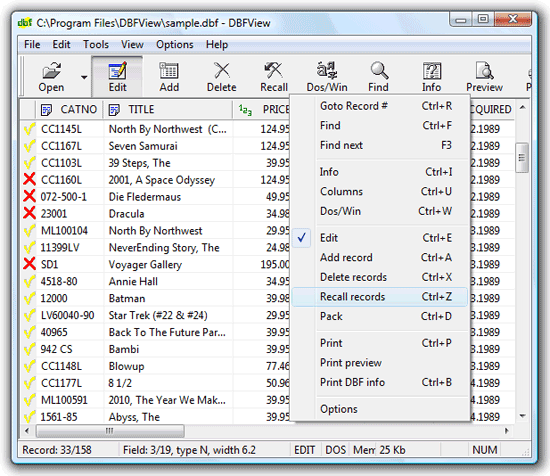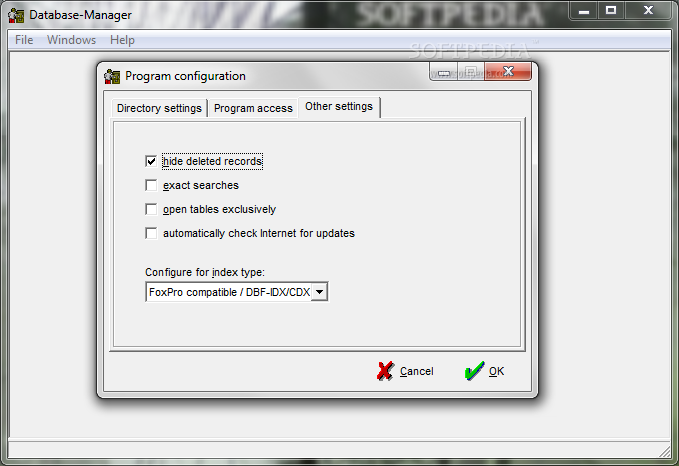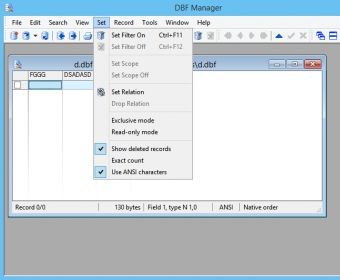
 Activate Special Logging - logs special routines. Logging should be deactivated once troubleshooting has been completed to avoid bloating the log file.
Activate Special Logging - logs special routines. Logging should be deactivated once troubleshooting has been completed to avoid bloating the log file. 
(The most recent prior log file will be renamed to ProcLog-CacheBak.txt anything older will be deleted.) Note: This feature is intended for diagnosting purposes only. When logging is deactivated, results will be stored in ProcLog-Cache.txt, also in the main folder. Trace output will be directed to the file AWProcLog.txt in the main Aceweb folder.
 Activate Process Logging- IIf process logging is active, various initialization steps will be recorded during the File/COM launch routines, as well as when pages are loaded. Of the Above - This selection will erase Debug files, and clearĮnrollment, Session, and Hit Log records as described above. While this information can be quite useful in the short term, its value WC Hit Log - This option will remove any records that are overģ0 days old from the WWRequestLog.DBF file, which logs each ACEweb hit,Īnd also tracks error information. Not purged periodically, WWSession can grow quite large, taking up extraĭisk space and possibly slowing down operations. Information each time a user logs on to ACEweb. Over 30 days old from the WWSession.DBF file, which is used to store session WC Session Records - This option will remove any records that are Recent entries may prove helpful in certain troubleshooting situations.Ĭhoice removes any records that are over 30 days old from the AWEnroll,ĪWWkshop, AWExcept, and AWRegLog tables, as well as records The user logs off, ACEweb no longer makes use of these records, though One or more records to various ACEweb session table files. Temporary Enrollment Records - Each enrollment transaction adds Erase Temporary WC Files - The Temp folder specified in Aceweb.INI and WC.INI should be self-cleaning but may accumulate outdated files, especially under File Mode. Use this option to clean up outdated leftover temp files. Ideally such files would be deleted at runtime, once they are no longer needed, but that may not always happen. These may include email attachments or files for download. Erase Temporary Template Files - The HTML Templates folder contains a TEMP subfolder which acts as a repository for disposable files created during various ACEweb operations. (It will not erase the basic Gateout.log file.) This option will erase Gateout log files that are over 30 days old. Logging of Gateout operations is triggered by the presence of a file named Gateout.log in the Extend folder. Option will erase AW Debug files that are over 30 days old.Įrase Gateout Log Files - If the Gateout module is active, staff can make payments from Manager using a redirect online pay service. More than a few days old, it's unlikely they'll be of any use. New log file is created each day, with the naming format AWDByymmdd.ĭebug files may be useful for tracking down problems, but once they are Some ACEweb operations will create entries in the debug log. Link opens the ACEweb Cleanup page with the following clean up options:ĭebug Files - Depending on the DebugFlag setting in ACEWEB.INI, Up System Files link on the ACEweb Admin page. You can manually clear out certain files with the Clean Temp Sub-directories for all interfaces (e.g. AW STORM Temporary Report files (x/frt files). Daily Debug Log files (AWDBxxxxx.dbf/fpt/cdx/txt files). The clean up tool will remove outdated records from these databases: For example, if you want to remove entries/files older than 30 days, change the first value to 30: If necessary, you can edit the defaults in the cleanup.ini file. So the next time it would run is July 29, 2020. In the above example it was run on July 22, 2020. The third value is when the cleanup routine was last run. in the above example, ACEweb will run the cleanup routine every 7 days. The second value is how often to run the cleanup routine. in the above example, ACEweb will remove entries/files older than 90 days. The first value is the number of days to go back. The cleanup.ini has 3 settings, separated by colons (:): If you don't have a copy, contact your ACEware technician to obtain one.
Activate Process Logging- IIf process logging is active, various initialization steps will be recorded during the File/COM launch routines, as well as when pages are loaded. Of the Above - This selection will erase Debug files, and clearĮnrollment, Session, and Hit Log records as described above. While this information can be quite useful in the short term, its value WC Hit Log - This option will remove any records that are overģ0 days old from the WWRequestLog.DBF file, which logs each ACEweb hit,Īnd also tracks error information. Not purged periodically, WWSession can grow quite large, taking up extraĭisk space and possibly slowing down operations. Information each time a user logs on to ACEweb. Over 30 days old from the WWSession.DBF file, which is used to store session WC Session Records - This option will remove any records that are Recent entries may prove helpful in certain troubleshooting situations.Ĭhoice removes any records that are over 30 days old from the AWEnroll,ĪWWkshop, AWExcept, and AWRegLog tables, as well as records The user logs off, ACEweb no longer makes use of these records, though One or more records to various ACEweb session table files. Temporary Enrollment Records - Each enrollment transaction adds Erase Temporary WC Files - The Temp folder specified in Aceweb.INI and WC.INI should be self-cleaning but may accumulate outdated files, especially under File Mode. Use this option to clean up outdated leftover temp files. Ideally such files would be deleted at runtime, once they are no longer needed, but that may not always happen. These may include email attachments or files for download. Erase Temporary Template Files - The HTML Templates folder contains a TEMP subfolder which acts as a repository for disposable files created during various ACEweb operations. (It will not erase the basic Gateout.log file.) This option will erase Gateout log files that are over 30 days old. Logging of Gateout operations is triggered by the presence of a file named Gateout.log in the Extend folder. Option will erase AW Debug files that are over 30 days old.Įrase Gateout Log Files - If the Gateout module is active, staff can make payments from Manager using a redirect online pay service. More than a few days old, it's unlikely they'll be of any use. New log file is created each day, with the naming format AWDByymmdd.ĭebug files may be useful for tracking down problems, but once they are Some ACEweb operations will create entries in the debug log. Link opens the ACEweb Cleanup page with the following clean up options:ĭebug Files - Depending on the DebugFlag setting in ACEWEB.INI, Up System Files link on the ACEweb Admin page. You can manually clear out certain files with the Clean Temp Sub-directories for all interfaces (e.g. AW STORM Temporary Report files (x/frt files). Daily Debug Log files (AWDBxxxxx.dbf/fpt/cdx/txt files). The clean up tool will remove outdated records from these databases: For example, if you want to remove entries/files older than 30 days, change the first value to 30: If necessary, you can edit the defaults in the cleanup.ini file. So the next time it would run is July 29, 2020. In the above example it was run on July 22, 2020. The third value is when the cleanup routine was last run. in the above example, ACEweb will run the cleanup routine every 7 days. The second value is how often to run the cleanup routine. in the above example, ACEweb will remove entries/files older than 90 days. The first value is the number of days to go back. The cleanup.ini has 3 settings, separated by colons (:): If you don't have a copy, contact your ACEware technician to obtain one. 
The automatic clean up routine is implemented by adding a cleanup.ini file to the ACEweb program folder (e.g.








 0 kommentar(er)
0 kommentar(er)
